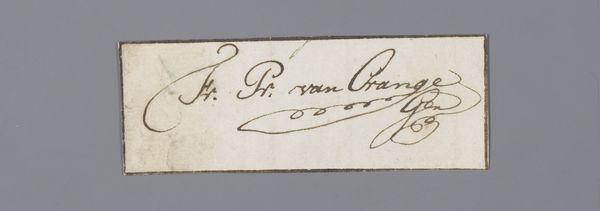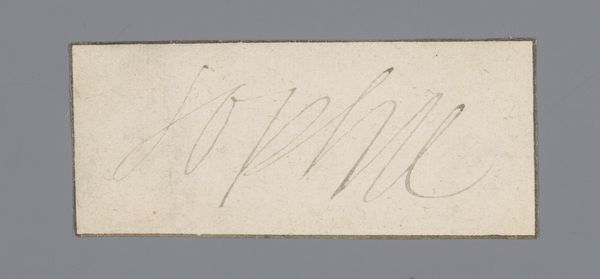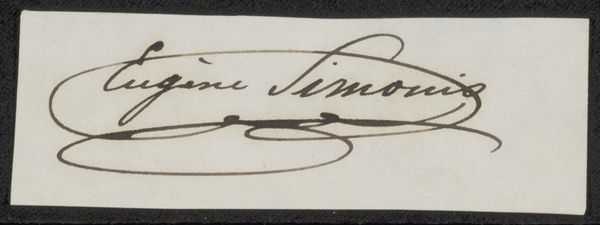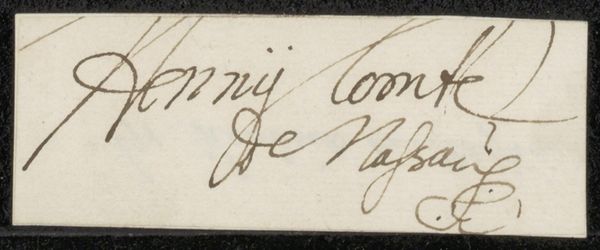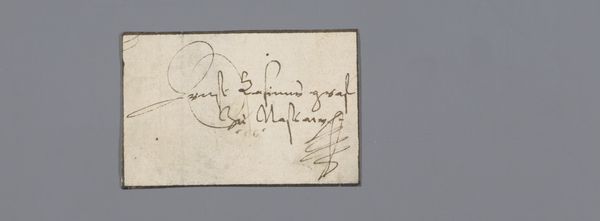
Dimensions: height 3.2 cm, width 8.4 cm
Copyright: Rijks Museum: Open Domain
Curator: It has a strange sort of elegance to it. Editor: Indeed. This piece, titled "Document," originates from somewhere between 1750 and 1800. It's currently held at the Rijksmuseum and is identified as the signature of Willem V, Prince of Orange-Nassau. Curator: So, essentially a flourish, a mark of power rendered in brown ink. Look at how that script practically dances across the page. The negative space it creates is almost as significant as the inked lines. It's a performance of authority captured on a tiny scale. Editor: Exactly! Let’s consider the paper itself – the ground for this 'performance'. Its manufacture represents considerable labor: from sourcing raw materials, to processing, to distributing. And, for whom was it ultimately destined? For bureaucratic pronouncements? Personal correspondence? Curator: One thinks about the person, and the gesture… imagine the Prince signing numerous documents throughout his day, the weight of governance physically manifesting in these repetitive strokes. It speaks volumes about the daily life of someone in such a position. The subtle gradations of pressure in the line betray much about its execution. Editor: Agreed, this speaks to ideas of social control, right? In the era of monarchies, handwriting functioned as both authorization and aesthetic pleasure. Willem wasn’t just confirming actions but also embodying a brand of legitimacy inextricably linked to his penmanship. Each looping curve reinforces hierarchies! Curator: Fascinating how this simple autograph can reflect complex socio-political relations. It leaves me to ponder: how many unsigned requests met dead ends precisely because they lacked that familiar scrawl. Editor: An excellent point. For me, understanding the provenance of its raw components, like paper, reveals volumes concerning Dutch trade during the late 18th century. It also sheds light upon labor relations – whose work allowed royalty such indulgences daily! Curator: Viewing it with that lens opens a whole new chapter. This document is an intriguing microcosm—a little peek into a past age—a physical artifact full with historical implications about rank, authority, and artistry. Editor: It seems such intimate access points help to bring to life grand historical processes embedded during their development; it creates multiple routes that reveal its function within society.
Comments
No comments
Be the first to comment and join the conversation on the ultimate creative platform.
